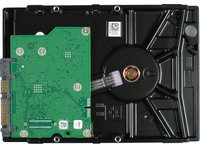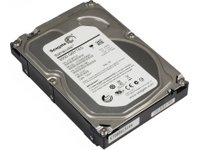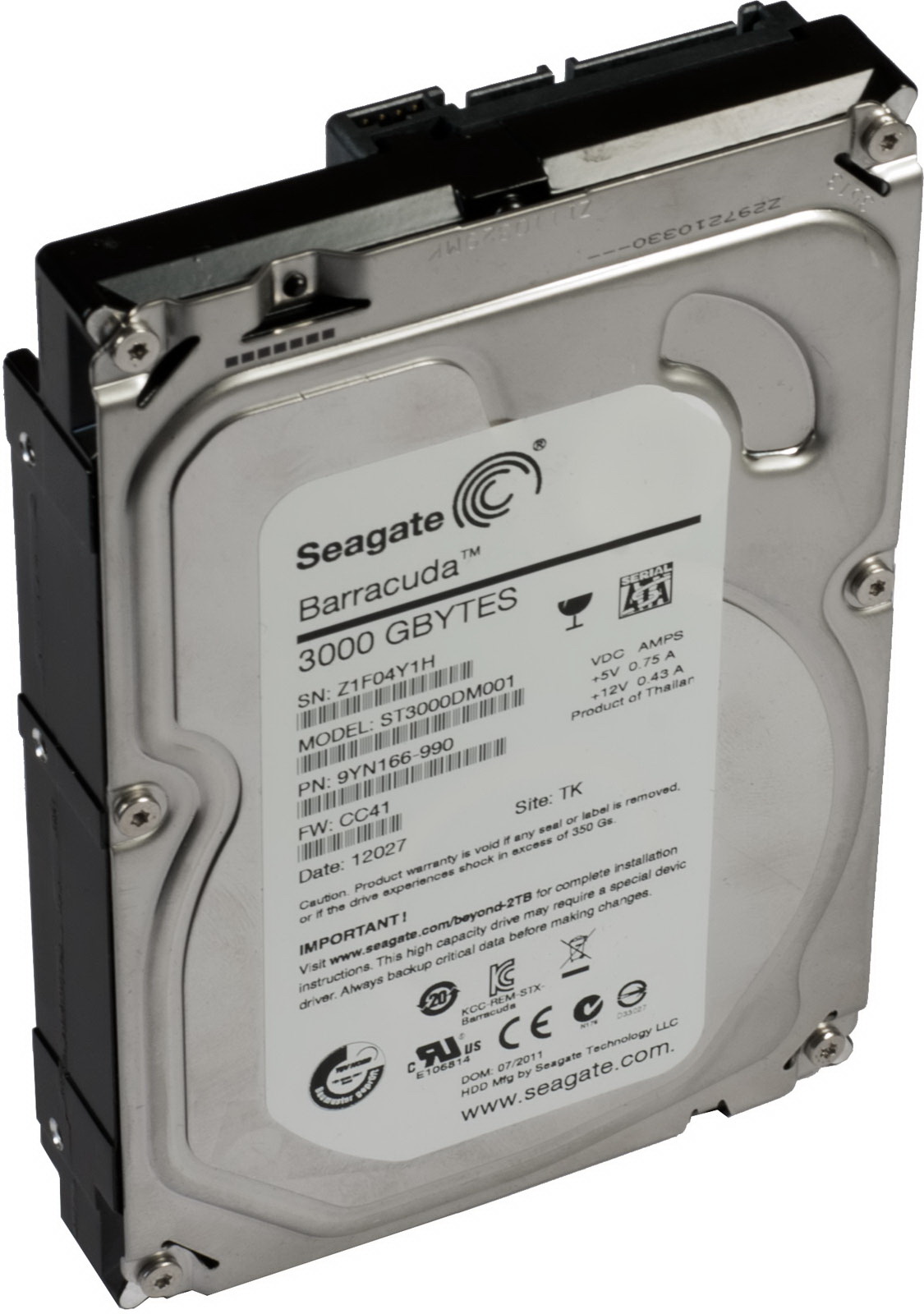Hitachi's 4 TB Hard Drives Take On The 3 TB Competition
Hitachi recently started shipping a pair of 4 TB hard drives. We can see that they're pretty expensive, but how do they compare to existing 3 TB models in other ways? It’s time for a comprehensive overview of today's high-capacity hard drive offerings.
3 TB: Seagate Barracuda (ST3000DM001)
Seagate’s Barracuda brand has been around for 15 years. The first Barracuda drive was also the first disk with a spindle speed of 7200 RPM (though it was only offered in 1.2 and 2.5 GB capacity points sporting a SCSI-2 interface).
Today’s Barracuda sheds all of the product name suffixes that Seagate has used over there years. There was a Barracuda ATA family (from I to V), Barracuda 7200.7 to .12, Barracuda LP at a power-optimized spindle speed (5900 RPM), the Barracuda Green, and finally a Barracuda XT, which was one of the first SATA 6Gb/s-capable models available. Various versions of the Barracuda XT and LP still exist, but the latest family covering all capacity points is simply referred to as Barracuda after all of these years. Our 3 TB sample sells for around $170 (140 Euros in Europe).
There are 250, 320, 500, 750 GB, 1, 1.5, 2, and 3 TB capacities available. Everything from 750 GB and up comes with 64 MB cache memory; the smaller capacities have to live with 16 MB and target low-cost applications with single-platter designs. Perhaps the Barracuda's most interesting attribute is its 1 TB per platter density. This means that the 3 TB drive only uses three platters, while Hitachi's drive requires five to hit the same capacity point. As a result, Seagate's Barracuda 3 TB is the coolest 3 TB hard drive on the market.
One item in the Barracuda's data sheet related to reliability caught our eye. Although the document lists NAS and desktop RAID applications as best-fit applications for Seagate's offering, the specified 2400-hour power-on rating indicates that this drive was not designed for environments requiring 24/7 availability. If that were the case, its specification should say 8760 hours. The 2400-hour specification, which represents only 100 days of continuous operation, assumes that drives are used eight hours per day, five days per week. This means that the drives should take full advantage of any available power-saving technologies that shut down the spindle motor during idle times. This applies equally to desktops and storage servers. Should you decide to use Barracuda drives in a NAS device, for instance, don’t forget to configure its power management appropriately.


Get Tom's Hardware's best news and in-depth reviews, straight to your inbox.
Current page: 3 TB: Seagate Barracuda (ST3000DM001)
Prev Page 3 TB: Hitachi Deskstar 7K3000 (HDS723030ALA640) Next Page 3 TB: Seagate Barracuda XT (ST3300651AS)
Patrick Schmid was the editor-in-chief for Tom's Hardware from 2005 to 2006. He wrote numerous articles on a wide range of hardware topics, including storage, CPUs, and system builds.
